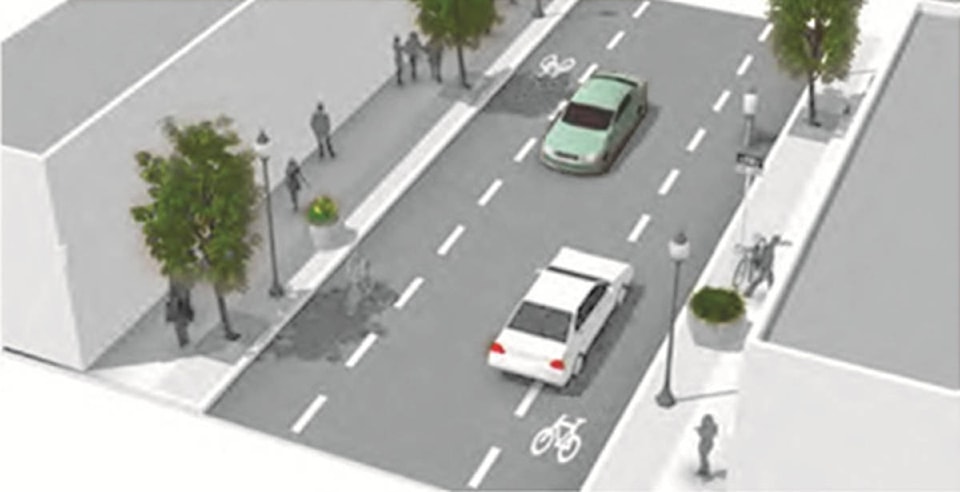By Tim Schewe
A DriveSmartBC web site visitor asks, “Currently the City of Victoria is bringing in new Advisory bike lanes. I can find nothing in the drivers licence training or BC Motor Vehicle Act that gives a legal driving approach to these type of lanes or trains new and old drivers to manage these lanes? Please advise where this is covered in driver training.”
Well, I’m going to dare to say that you already know what to do and have probably been doing it from the time you started to drive, regardless of how old you are.
Imagine a narrow road that has no markings at all used by drivers, cyclists and pedestrians. Chances are good that you drive down the centre until you meet another vehicle coming in the opposite direction. You both slow, make sure that you can move to the right safely and pass by each other carefully. Simple, right?
An advisory bike lane may add signs to notify drivers at the start and lines on the pavement to formalize what we already do. They will probably have a speed limit of 30 km/h.
For the example given, there are two designated use lanes for cycles, one on each side of a centre lane for motor vehicle traffic. They are defined by a single broken white line so motor vehicle traffic may move into the cycle lane if required.
You already know how to make a safe lane change, too. Since you are a guest there, the cyclists have right of way and you will have to wait your turn to use the cycle lane. In fact, it is possible that opposing drivers may actually have to come to a halt and wait their turn if the cycle lanes are busy.
This situation should only occur where it is not possible to widen the roadway to accomodate two way traffic and cycle lanes.
Parking is not allowed unless there are marked parking areas delineated on one or both shoulder sides of the cycle lanes.
According to B.C.’s Active Transportation Design Guide, advisory bicycle lanes are not considered an all ages and abilities bicycle facility type as protected cycle lanes are. Learn more about them in Chapter D.5 of Cycling Facilities.
Our Learn to Drive Smart and Tuning Up for Drivers guides do not give specific examples of this situation, but do teach you all about the bits and pieces that go together to make it function.
It’s not a mystery, just something that is relatively new to B.C. As you would in any other unfamiliar situation that you encounter while driving, slow down, think ahead and proceed with caution!
Tim Schewe is a retired constable with many years of traffic law enforcement. To comment or learn more, please visit DriveSmartBC.ca
